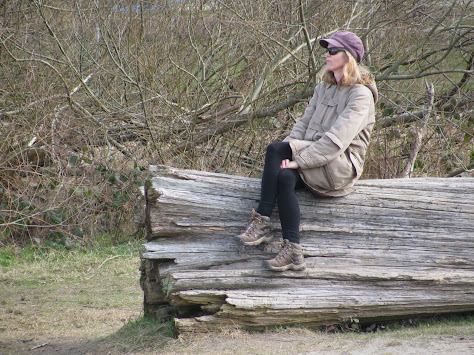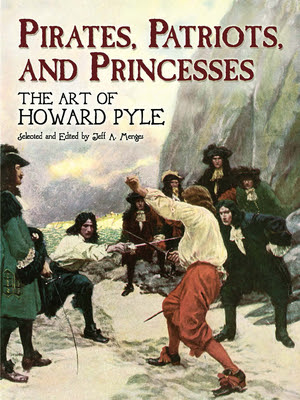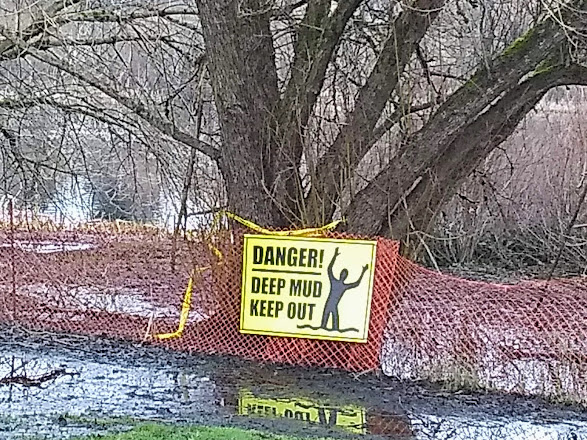All those who learned to drive on an original manual shift vehicle (c. 1960), please raise your hand – hey, not the one that's on the wheel! I did -- could do it in my sleep -- but today's new-fangled stuff is beyond me. I still can't figure out how people can lock their car doors by walking 15 feet away, then turning back, and pointing their key in the car's general direction.
There are other things I haven't been able to figure out lately, and I've felt pretty out of gear. Where to go next? How to get from here to there? And somehow the idea of "neutral" came to mind – just calm down, let the thoughts stop whirring, and things will unfold. That led me to memories of a favourite calm-inducing place, a park about 10 blocks away, with a small inland lake.
Along the margins, concerted effort is being made to reclaim what was once marshland. Almost every time I go there, I'll see someone else relishing the calm, often at this long-fallen log.
To enter the spirit, I decided to paint this young woman in these subtly toned surroundings. At the same time, I'd experiment with a lay-in method that I'd recently seen in an on-line painting demo:-- Begin with an all-over, non-descript mix of paints, and then wipe out the general outline of your subject.
Hmm. That worked pretty well for this straightforward composition. But I could see that the hardest part, if I planned to stay "neutral," would be to give substance and contrast to the background. Here's an early stage, as I'd applied the lightest lights and intended to keep lightening the whole.
I knew there was an issue with the overall bland tone (my camera likes colour and has made this look more colourful than it actually was). Well, what to do about it? Answer: Finish it as I'd begun and then go on to the next painting! So here's the final version of "Edge of the Marsh" (copyright 2022).
As usual, I brought the finished piece upstairs to live with for a while and placed it on a shelf against the pale olive of my living room wall. As soon as I walked more than three feet away, it "beige-d out" and a message from past teachings hit me.
This was not a teaching I received directly but through a great lineage of American artists – some who are doing realist art today and learned from predecessors who had learned from some of the great book and magazine artists of the 20th century – when print media still meant hands-on art and craft. That period is called "The Golden Age of Illustration" for good reason.
The words I remembered were from Howard Pyle, one of these greats who was a teacher of many others. Among his favourite subjects:--
One of his renowned students was N.C. Wyeth – father of Andrew. How I wish I still had my brother's revered boyhood book, Robert Louis Stevenson's "Treasure Island" with N.C.'s memorable illustrations!
Pyle's words of wisdom that had popped into my head were the following:--
"If a painting is worth anything, it will stop you dead from 20 feet across the room."
Well, let's see how he measured up in his own painting "Marooned" -- with a vaguely comparable subject of seated figure in an almost monotone horizontal landscape:--
Wow! There's no doubt this guy knew what he was doing.
I liked painting "Edge of the Marsh." It made for a restful interlude, and I kind of like the outcome, as long as I don't move more than three feet away from it. But obviously, there are risks to staying calmly in neutral gear. I'll have to tread carefully as I consider my next move.











No comments:
Post a Comment